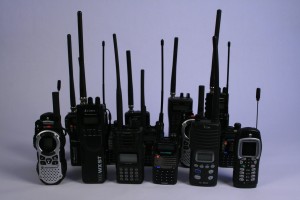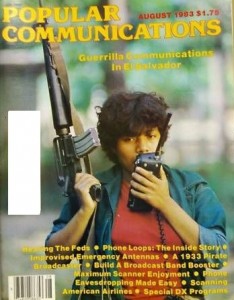Work on Volume 2 is well under way.
I have the first several chapters done, and the table of contents created to serve as an outline.
As chapters are completed, It may change how I present some of the later material, so the TOC WILL change.
Here is the TOC.. .If you see something you think should be added, let me know. Keep in mind, SIGINT and Electronic Warefare will be covered in Volume Three.
Legal
Preface
I. Introduction
II. Security
A) OPSEC
B) COMSEC
C) TRANSEC
D) Threat SIGINT Capabilities
Part 1: Administration
I. Define standard operating procedures. (SOP’s)
II. Communication Table of Organization and Equipment
. A) Category of radios:
. B) Radio Operation Constraints
III. UHF/VHF Radio Types (and High HF)
. A) FRS/GMRS portable radios:
. B) GMRS only portable and mobile radios:
. C) MURS portable radios:
. D) Citizens Band (CB) portable radios:
. E) Citizens Band (CB) Mobile radios:
. F) ISR and SMR band digital frequency hopping voice radios:
. G) Business Band analog voice portable and mobile radios:
. H) Business Band analog voice Chineese import radios:
. I) Business Band digital voice portable and mobile radios:
. J) UHF/VHF Ham radio fm analog voice portable and mobile radios:
. K) UHF/VHF Ham radio SSB mobile radios:
. L) UHF/VHF Ham radio low usage bands portable and mobile radios:
. M) UHF/VHF Ham radio digital voice portable and mobile radios:
. N) UHF/VHF Ham radio digital voice with transverter to low usage bands portable and . mobile radios:
. O) UHF/VHF Ham digital data and packet radio:
. P) 10m Ham portable and mobile radios:
IV. Range Beyond Handheld
. A) Relay
. B) Simplex Repeater
. C) Duplex Repeater
. D) Cross Band Repeater
. E) Multipoint links
. F) Directional Antennas
V. Beyond Line Of Sight (BLOS)
. A) HF Groundwave
. B) HF Skywave
. C) HF NVIS
. D) mixed band relays
VI. HF Radio Types
. A) High Frequency (HF) Ham analog voice radios:
. B) High Frequency (HF) Ham continous wave (CW) morse code radios:
. C) High Frequency (HF) Ham digital text mode radios:
. D) High Frequency (HF) Ham graphic mode radios:
. E) High Frequency (HF) Ham digital voice radios:
F. ) High Frequency (HF) Ham digital packet and data radios:
VII. BLOS Less Common Methods
. A) Microwave relay
. B) Tropo Scatter
. C) EME/ Moonbounce
. D) Meteor Scatter
. E) HM-mesh/VOIP
. F) HamSat
. G) Sat Phone
VIII. Other Means of Communications
. A) POTS
. B) Field Phones
. C) VOIP
. D) Visual Signals
. E) Sound Signals
. IX. Cellular Telephones
XI. OPSEC and COMSEC and Sensitive Materials
XII. Codenames and Codewords
XIII. Generating SOI’s
XIV. Generating OTP’s and Dryad Sheets
XV. Generating Codebooks
Part 2: Mission Planning and Opertaions
I. Spectrum Management
II. COMPLANS
III. Physical Setups
. A) Organization, Links, and OPORD
. B) Relay/ Repeater site selection
. C) CP and CP site selection
. D) LP/OP and site selection
. E) Vehicle Setups
IV. Handling Traffic
V. Nets
VI. Supporting Joint Operations
Part 3: Training and Discipline
I. Basics of Training
. A) Crawl, Walk, Run
. B) Planning lessons and classroom basics
. C) Field training basics
II. Classroom exercises
. A) physically using a radio
. B) Standard Operating Procedures
III. Field Excercises
. A) Signals specific drills vs Signals as part of other exercises.
. B) Using equipment in the field
. C) Equipment performance testing
. D) Alternates, contingencies and failover
. E) After Actions
IV. Recruiting
. A) Creating a program of continuity and shared responsibilities
. B) Expanding the signals team, and training its new members
Part 4 Conclusion
Part 5 Appendices


